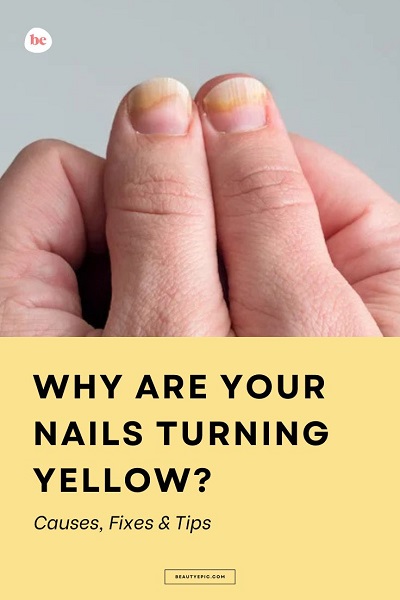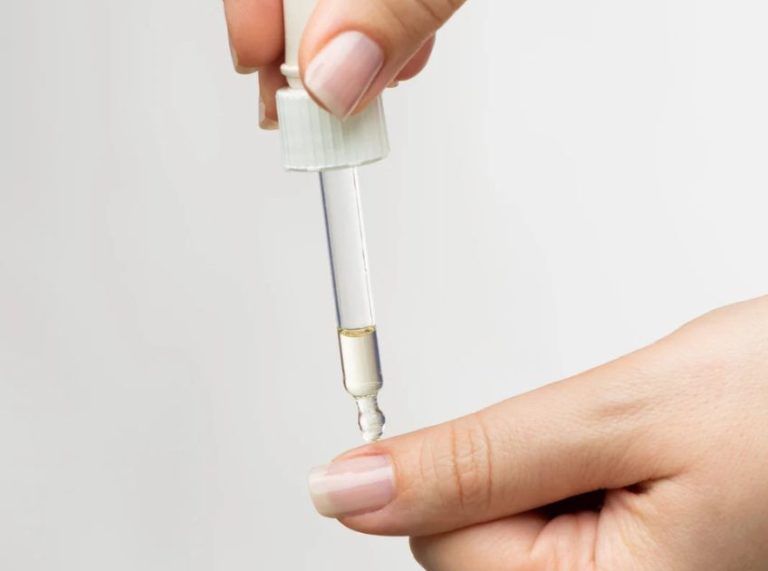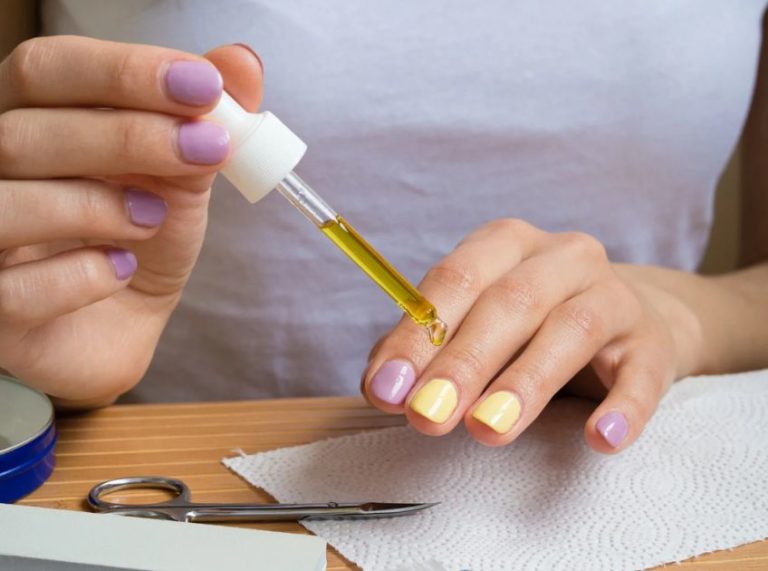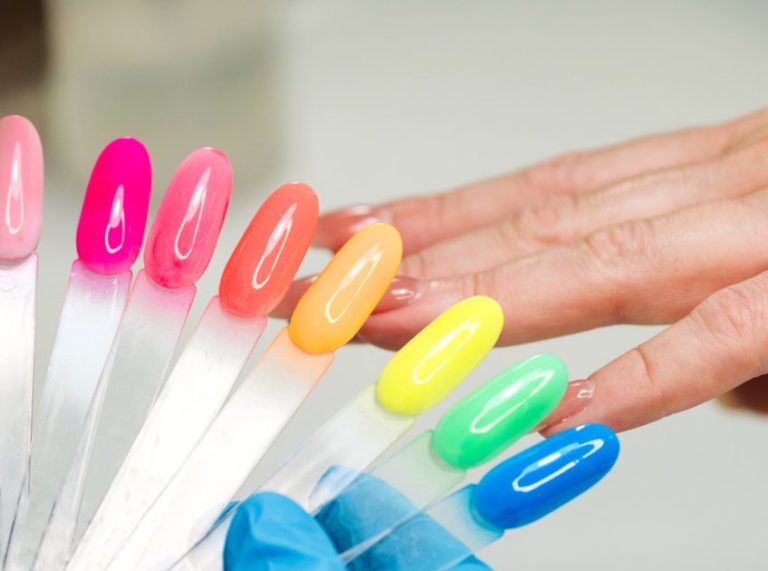
Important: This article is for informational purposes only. Please read our full disclaimer for more details.
Ever looked down at your nails and noticed a yellowish tint that wasn’t there before? Yellow nails may seem like a minor cosmetic concern, but they can sometimes signal underlying health issues or habits that need changing. Whether you’re a regular polish wearer or just noticing discoloration out of the blue, understanding the causes and treatments is the first step to restoring nail health.
Yellow Nails? Here’s What They Might Be Telling You
Your nails are more than just a beauty feature—they can reflect your overall health. While slight yellowing may result from external factors, such as nail polish, it can also indicate more serious conditions, including fungal infections or systemic issues. Knowing the root cause is crucial for choosing the right treatment and avoiding long-term damage.
Common Culprits Behind Yellow-Tinged Nails
Several lifestyle, environmental, and health factors can cause your nails to turn yellow. Here are the most common ones:
- Frequent Nail Polish Use: Especially darker shades like red or black. Without a protective base coat, pigments can stain the nail plate.
- Smoking: Nicotine and tar in tobacco can discolor both nails and fingers over time.
- Fungal Infections: Often caused by dermatophytes, fungal infections can thicken and yellow the nail, often making it brittle.
- Aging: As we age, nail growth slows, and discoloration can naturally occur.
- Underlying Medical Conditions:
- Diabetes: High blood sugar levels may lead to fungal overgrowth.
- Psoriasis can affect nail color and texture.
- Respiratory disorders: Yellow Nail Syndrome is associated with chronic bronchitis and lymphedema.
Study Spotlight: A 2011 report in Clinics in Dermatology emphasized the importance of nail changes as markers for systemic diseases, particularly noting yellow nails in lung-related conditions (1).
Tried-and-True Remedies to Brighten Yellow Nails
Depending on the cause, you can use home remedies or medical treatments to restore your nails to their natural tone.
DIY Remedies for Yellow Nails: Easy At-Home Treatments
| Remedy | Ingredients Needed | Steps to Follow | How Often to Use | Best For |
|---|---|---|---|---|
| Lemon Juice Soak | Fresh lemon juice (1–2 lemons), bowl | 1. Squeeze juice into a bowl 2. Soak nails for 10–15 minutes 3. Rinse and moisturize | 3–4 times a week | Stains from polish or mild yellowing |
| Baking Soda Scrub | 1 tbsp baking soda, a few drops of water | 1. Make a thick paste 2. Apply with a toothbrush 3. Gently scrub for 2 minutes 4. Rinse thoroughly | 2–3 times a week | Surface stains and dull nails |
| Hydrogen Peroxide Dip | 1 tbsp 3% hydrogen peroxide, 1/2 cup water | 1. Mix the solution in a bowl 2. Soak nails for 10 minutes 3. Rinse and apply cuticle oil | Once a week | Deeper discoloration, mild fungal issues |
| Apple Cider Vinegar | 1 part ACV, 1 part water | 1. Mix in a small bowl 2. Soak nails for 15 minutes 3. Rinse and dry | Daily for 2 weeks | Fungal infections and bacterial buildup |
| Tea Tree Oil Treatment | 2–3 drops tea tree oil, carrier oil (optional) | 1. Apply directly or diluted with carrier oil 2. Massage into nails 3. Leave overnight | Daily for best results | Mild nail fungus and yellowing |
Pro Tip: Always moisturize your nails and cuticles after DIY treatments to prevent dryness and brittleness.
1. DIY Natural Brighteners
- Lemon Juice Soak: Acts as a natural bleach and antibacterial. Soak nails for 10 minutes in fresh lemon juice.
- Baking Soda Paste: Mix with water and gently scrub your nails with a toothbrush.
- Hydrogen Peroxide Solution: Use a diluted 3% hydrogen peroxide soak once a week to lift surface stains.
2. Antifungal Treatments
If a fungal infection is suspected:
- Use OTC antifungal creams containing clotrimazole or terbinafine.
- For persistent infections, dermatologists may prescribe oral antifungals like itraconazole or fluconazole.
3. Cosmetic Fixes (Temporary)
- Use a base coat to prevent staining from polish.
- Try a nail brightening pencil or optical nail whitener for instant improvement.
Smart Habits to Keep Yellow Nails Away for Good
Prevention is always better than a cure. Adopt these habits to maintain clean, healthy-looking nails:
- Use a Base Coat: Always apply a clear base coat before using colored nail polish.
- Let Your Nails Breathe: Take breaks between manicures to avoid polish build-up.
- Trim and File Regularly: Keep nails short to prevent fungal growth.
- Disinfect Nail Tools: Whether at home or in a salon, ensure all tools are properly sanitized.
- Moisturize: Hydrated nails are less prone to damage and discoloration.
When Yellow Nails Signal a Serious Health Concern
If your yellow nails are accompanied by other symptoms like thickening, separation from the nail bed, or swelling, it could be a sign of something more serious:
- Yellow Nail Syndrome: A rare condition involving yellow, thickened nails, respiratory issues, and limb swelling.
- Diabetes or Liver Disease: Yellowing may occur due to changes in circulation or metabolism.
Scientific Insight: According to the Journal of the American Academy of Dermatology, yellow nail syndrome (2) can be an important marker for chronic pulmonary conditions and often requires medical management.
Seek medical help if:
- The discoloration persists despite home treatment.
- Nails become thick, brittle, or emit an odor.
- You notice changes in the surrounding skin or cuticles.
What Science Says: Research-Backed Causes & Treatments
Scientific studies confirm that nail discoloration can result from both exogenous and endogenous causes. A 2020 paper in Dermatology Practical & Conceptual emphasized the value of nail analysis in diagnosing internal diseases, with yellow discoloration linked to onychomycosis (fungal infection) in over 60% of reported cases (3).
Medical dermatology has also supported the use of topical antifungals and laser therapy in persistent cases. Moreover, clinical trials suggest tea tree oil may have mild antifungal properties, although not as potent as prescription options.
Frequently Asked Questions (FAQ’S)
Q1. Can yellow nails go away on their own?
A. Sometimes, yes—especially if the discoloration is due to nail polish or temporary staining. However, if caused by fungus or an underlying condition, it typically needs treatment.
Q2. Are yellow nails a sign of a vitamin deficiency?
A. They can be. Deficiencies in vitamin E, zinc, or biotin may contribute to nail discoloration. A balanced diet and supplements can help in such cases.
Q3. How long does it take to get rid of yellow nails?
A. It depends on the cause. Minor stains may fade in a week or two with home care. Fungal infections may take several weeks to months to resolve with consistent treatment.
Final Thoughts: Don’t Ignore What Your Nails Reveal
Yellow nails might not always be a red flag, but they’re certainly not something to overlook. From cosmetic staining to fungal infections and more serious health concerns, the reasons behind discoloration are varied. By understanding the causes and committing to proper nail care—or seeking medical attention when necessary—you can restore both the look and health of your nails.
Healthy nails are more than skin deep—they’re a reflection of your overall well-being. So next time your nails start to yellow, listen closely. They might just be trying to tell you something.

















